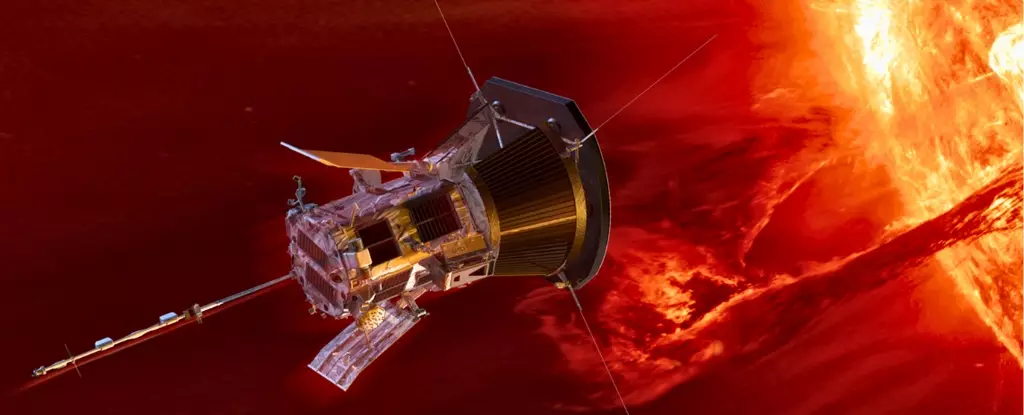In August 2018, NASA launched the Parker Solar Probe (PSP), marking the onset of an unprecedented journey to study the Sun’s outer corona. This innovative project aims to unravel the mysteries of the Sun and its influences on the solar system, a task that has intrigued scientists for decades. The probe’s mission is not just a local endeavor; it encompasses a broader exploration that could reshape our understanding of stellar phenomena across the universe.
Just a little over two months into its mission, the Parker Solar Probe shattered previous records. On October 29, 2018, it surpassed Helios 2’s distance benchmark, becoming the closest human-made object to the Sun. This incredible feat was achieved after a series of gravity-assist maneuvers around Venus, which nudged the probe closer to its target. The intricate planning and engineering that went into these maneuvers showcased NASA’s commitment to pushing the boundaries of solar science.
By December 24, 2024, the Parker Solar Probe achieved its closest approach to the Sun, skimming just 6 million kilometers (3.8 million miles) from its surface, equivalent to approximately 0.04 astronomical units (AU). Flying at astonishing speeds of around 692,000 kilometers per hour (430,000 miles per hour), it became the fastest human-made object in history. Every flyby around Venus over the preceding six years had incrementally drawn the probe nearer to the Sun, illustrating the mission’s meticulously calculated trajectory.
These record-breaking close encounters allow the Parker Solar Probe to conduct groundbreaking scientific research, including the study of solar wind—an increasingly crucial aspect for understanding the Sun’s impact on space weather, which, in turn, has significant implications for Earth and its technological infrastructure.
At the core of the Parker Solar Probe’s design is a sophisticated carbon foam shield, engineered to endure extreme temperatures ranging from 980°C to an astonishing 1425°C (1,800°F to 2,600°F). This thermal protection system is fundamental to safeguarding the probe’s scientific instruments, enabling them to remain at manageable room temperatures despite the intense heat radiating from the Sun.
The mission has also garnered attention from leading scientists. Nicky Fox, Associate Administrator for Science Mission Directorate at NASA, emphasizes the historic significance of this endeavor, stating, “Flying this close to the Sun is a historic moment in humanity’s first mission to a star.” Such close studies not only illuminate solar activities but also translate to valuable insights into how solar phenomena shape conditions throughout the solar system.
Unanticipated Findings and Implications for Future Research
The Parker Solar Probe has already delivered a wealth of unexpected discoveries, particularly evident during its initial forays into the solar atmosphere. During the spacecraft’s first pass in 2021, researchers observed that the corona is marked by irregularities—spikes and valleys—that challenged previous assumptions. Additionally, the probe unveiled the origins of “switchbacks” in the solar wind, revealing new dynamics that govern solar behavior.
This profound understanding reaches beyond the Sun. The PSP is designed to study the origins and behavior of space weather, tracking how solar wind interacts with planetary atmospheres and celestial bodies in the Solar System. Its investigation of Venus during multiple gravity assists also led to valuable discoveries, including the first complete image of its orbital dust ring, contributing to our overall understanding of planetary formation and evolution.
A Look Ahead: The Future of Solar Exploration
As the Parker Solar Probe continues its mission, future solar passes are planned for March 22, 2025, and June 19, 2025. Each of these events is anticipated to provide a deeper understanding of the Sun’s atmospheric processes and kinetic activities, which are critical for comprehending the broader dynamics of our solar system.
The wealth of data collected will pave the way for enhanced models predicting solar activity, a critical endeavor as society becomes increasingly reliant on technology sensitive to space weather. As Adam Szabo, the mission scientist at NASA’s Goddard Space Flight Center, articulates, this close approach will undoubtedly yield critical insights into solar wind acceleration and characteristics closer to the Sun.
The Parker Solar Probe represents a significant milestone in human exploration, bringing our species closer to understanding one of the most powerful forces in our solar system. By studying the Sun up close, scientists hope to unlock the mysteries inherent in this celestial body, leading to advancements that can protect our technological infrastructures. As we stand on the brink of a new era in solar science, the contributions of the Parker Solar Probe have set the foundation for continued exploration and discovery, underscoring our enduring quest to understand the universe.

